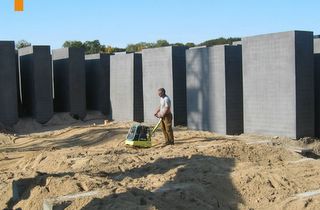Remembering Ourselves
Tomorrow (January 27th) is the 60th anniversary of the liberation of the Auschwitz-Birkenau extermination camp by Red Army troops. This solemn event is to be marked across Europe and around the world, and many world leaders will be at Auschwitz to commemorate the Shoah.
The ways that European countries are making (literally) concrete efforts to memorialise genocide, and the launch of a petition in New Zealand yesterday to change our flag, got me to thinking about how important symbolism and collective images of ourselves remain hot topics of debate, even in these ostensibly rational postmodern times we live in in the "secular" West.
The ways that European countries are making (literally) concrete efforts to memorialise genocide, and the launch of a petition in New Zealand yesterday to change our flag, got me to thinking about how important symbolism and collective images of ourselves remain hot topics of debate, even in these ostensibly rational postmodern times we live in in the "secular" West.
Preparing the Ground - Berlin, October 2004
Germany is currently putting the finishing touches on a large, sombre and spectacular Monument to the Murdered Jews of Europe, built on former waste ground in Berlin. The monument consists of more than 2000 concrete columns of varying heights, said by some to resemble a wheat field in the wind, others a graveyard. I'd like to believe that the monument, and particularly it's placement within sight of the Bundestag, and within a few metres of the remains of the Hitlerbunker, represents an honest attempt by the German government and people to remember what happened in Europe in the 1930s and 1940s. I look forward to visiting it one day.
Berlin is also home to another recent memorial to the Jewish people, the Jewish Museum, designed by Daniel Liebeskind. This site offers a great pictorial tour of the building, including commentary on its didactic and symbolic features.
The International Herald Tribune looks at Auschwitz as a common point of experience and memory for the whole of Europe in an excellent article. (Once again, it's Russell Brown's burgeoning media empire that pointed me to this particular story.)
Germany is currently putting the finishing touches on a large, sombre and spectacular Monument to the Murdered Jews of Europe, built on former waste ground in Berlin. The monument consists of more than 2000 concrete columns of varying heights, said by some to resemble a wheat field in the wind, others a graveyard. I'd like to believe that the monument, and particularly it's placement within sight of the Bundestag, and within a few metres of the remains of the Hitlerbunker, represents an honest attempt by the German government and people to remember what happened in Europe in the 1930s and 1940s. I look forward to visiting it one day.
Berlin is also home to another recent memorial to the Jewish people, the Jewish Museum, designed by Daniel Liebeskind. This site offers a great pictorial tour of the building, including commentary on its didactic and symbolic features.
The International Herald Tribune looks at Auschwitz as a common point of experience and memory for the whole of Europe in an excellent article. (Once again, it's Russell Brown's burgeoning media empire that pointed me to this particular story.)










0 Comments:
Post a Comment
<< Home